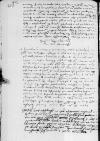Ea, quae Hendrik III of Nassau-Breda (*1483 – †1538), son of Count Johann V of Nassau-Dillenburg and Elisabeth of Hessen, married to Mencia de Mendoza, Marquess of Zenete, daughter and heiress of Rodrigo Díaz de Vivar y Mendoza, first Marquis of Zenete; Count of Nassau; from 1499 in the service of Archduke Philip of Habsburg as his advisor and military commander in the wars against France and Gueders (1507, 1514), 1515-1522 Stadtholder of Holland and Zeeland; 1521 Grand Chamberlain of Charles V of Habsburg (from 1522 to 1529 at the Spanish court), in 1530 followed Charles V to the coronation in Bologna, and attended the Diet of Augsburg (CE, vol. 3, p. 5)⌊illustrissimo domino de NassauHendrik III of Nassau-Breda (*1483 – †1538), son of Count Johann V of Nassau-Dillenburg and Elisabeth of Hessen, married to Mencia de Mendoza, Marquess of Zenete, daughter and heiress of Rodrigo Díaz de Vivar y Mendoza, first Marquis of Zenete; Count of Nassau; from 1499 in the service of Archduke Philip of Habsburg as his advisor and military commander in the wars against France and Gueders (1507, 1514), 1515-1522 Stadtholder of Holland and Zeeland; 1521 Grand Chamberlain of Charles V of Habsburg (from 1522 to 1529 at the Spanish court), in 1530 followed Charles V to the coronation in Bologna, and attended the Diet of Augsburg (CE, vol. 3, p. 5)⌋[1] cf. Ioannes DANTISCUS to Hendrik III of Nassau-Breda 1537-03-11 — 1537-03-16, CIDTC IDL 6510, letter lost⌊rescripsicf. Ioannes DANTISCUS to Hendrik III of Nassau-Breda 1537-03-11 — 1537-03-16, CIDTC IDL 6510, letter lost⌋, Serenissima Maiestas Vestra ex copia litterarum mearum, quam nobili Fabian Wojanowski (Fabian of Dąbrówka, Fabian Damerau) (†1540), courtier of King Sigismund I Jagiellon and Queen Bona Sforza, German tutor to their son Sigismund II Augustus. In 1531 he went back to his family name Damerau; Dantiscus' companion on his mission to Emperor Charles V and his successor as a royal envoy at the Imperial court; 1539-1540 Canon of Ermland (Warmia) (from 1538 coadiutor of Henryk von Snellenberg by Dantiscus' patronage) (KOPICZKO 2, p. 49; SBKW, p. 37)⌊Fabiano a DamarauFabian Wojanowski (Fabian of Dąbrówka, Fabian Damerau) (†1540), courtier of King Sigismund I Jagiellon and Queen Bona Sforza, German tutor to their son Sigismund II Augustus. In 1531 he went back to his family name Damerau; Dantiscus' companion on his mission to Emperor Charles V and his successor as a royal envoy at the Imperial court; 1539-1540 Canon of Ermland (Warmia) (from 1538 coadiutor of Henryk von Snellenberg by Dantiscus' patronage) (KOPICZKO 2, p. 49; SBKW, p. 37)⌋, ut illam Serenissimae Maiestati Vestrae interpretetur, misi, accipiet. Ex England⌊AngliaEngland⌋ hucusque nihil est responsum. Subvereor, ne Thomas Cranmer (*1489 – †1556), close associate of King Henry VIII Tudor, later advisor to Edward VI Tudor, burned at the stake during the brief restoration of Catholicism in England during Mary Tudor's reign; lecturer at Jesus College in Cambridge; 1532 archbishop of Canterbury⌊archiepiscopo illiThomas Cranmer (*1489 – †1556), close associate of King Henry VIII Tudor, later advisor to Edward VI Tudor, burned at the stake during the brief restoration of Catholicism in England during Mary Tudor's reign; lecturer at Jesus College in Cambridge; 1532 archbishop of Canterbury⌋, cf. Ioannes DANTISCUS to Thomas CRANMER Löbau (Lubawa), 1536-10-15, CIDTC IDL 1546⌊ad quem scripsicf. Ioannes DANTISCUS to Thomas CRANMER Löbau (Lubawa), 1536-10-15, CIDTC IDL 1546⌋, male cedant omnia; qui ob invectum, vel potius defensum Luteranismum a plebe, inter alias condiciones, sedato tumultu postulatus erat ad poenam. Si tamen succedente tempore quidpiam ab Thomas Cranmer (*1489 – †1556), close associate of King Henry VIII Tudor, later advisor to Edward VI Tudor, burned at the stake during the brief restoration of Catholicism in England during Mary Tudor's reign; lecturer at Jesus College in Cambridge; 1532 archbishop of Canterbury⌊eoThomas Cranmer (*1489 – †1556), close associate of King Henry VIII Tudor, later advisor to Edward VI Tudor, burned at the stake during the brief restoration of Catholicism in England during Mary Tudor's reign; lecturer at Jesus College in Cambridge; 1532 archbishop of Canterbury⌋ recepero, curaturus sum omni studio, quodcumque id erit, Serenissimae Maiestati Vestrae tran paper damaged⌈[n]n paper damaged⌉smittere; itidem et simulacra[2], quamprimum a probably Hans Hefener (Hans Heffner), Dantiscus’ court painter; author of the portrait of Princess Isabella Jagiellon and several other portraits commissioned by Queen Bona Sforza; brother-in-law of Crispin Herranth (BOETTICHER 1894, p. 147-149)⌊pictore meoprobably Hans Hefener (Hans Heffner), Dantiscus’ court painter; author of the portrait of Princess Isabella Jagiellon and several other portraits commissioned by Queen Bona Sforza; brother-in-law of Crispin Herranth (BOETTICHER 1894, p. 147-149)⌋, qui iis inten paper damaged⌈[ten]ten paper damaged⌉dit, perfecta fuerint.
Quod reliquum est, me gratiae Serenissimae Maiestatis Vestrae humillime commendo atque supplico, quemadmodum novissime in discessu meo Serenissima Maiestas Vestra mihi clementer ter data manu pollicita est, ne temere deinceps hominibus me deferentibus, qui nomen habere fugiunt, credat, sed me solita sua reginali benignitate ut domina mea clementissima prosequatur. Dominus Deus eandem Serenissimam Maiestatem Vestram cum tota prole regia quam diutissime sospitet prosperetque in omnibus.

 BCz, 244, p. 202
BCz, 244, p. 202